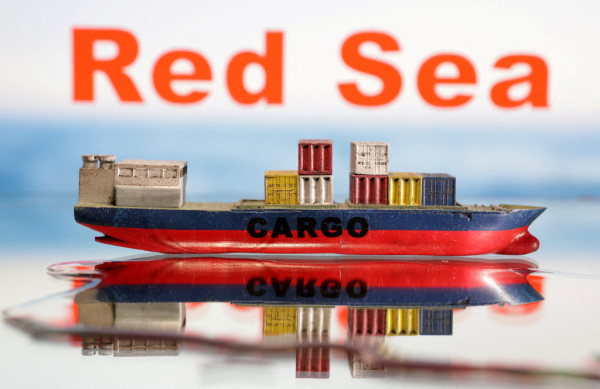
Entering 2024, Yemen's Houthi armed attacks on ships in the Red Sea have continued intermittently for more than two months. According to the Houthis, ships owned or operated by Israeli companies or flying the Israeli flag are "legitimate targets" for the group. On January 14, the United States and the United Kingdom, in order to protect their interests in the region, launched air strikes on the western port city of Hodeidah, which is effectively controlled by the Houthis, which is bound to trigger retaliation by the Houthis, and the situation is deteriorating. At present, some shipping companies have been forced to suspend ships in the Red Sea, and the international maritime market has been affected, which is the most serious damage to Asian ports.
Arguably, geopolitics has emerged as the biggest challenge facing the maritime industry in 2024, with escalating tensions in the Red Sea region triggering a series of knock-on effects. The deterioration of the situation has led to disruption of routes, detour of ships, chaos of shipping schedules, tight shipping space and soaring freight rates. Especially from January, the Asian lunar year shipment tide will exacerbate the shortage of containers and the crisis of looting has begun to appear. According to authoritative data, before the Chinese New Year, the volume of container boxes arriving at Asian ports will be 780,000 TEU less than before, and the shortage of Asian containers will have a very significant impact on the global supply chain, even more serious than the shortage of ship capacity.
From the current analysis of all factors, there are two reasons for the current shortage of Asian containers: First, the unstable situation in the Red Sea leads to ships on European routes circling the Cape of Good Hope in South Africa, the sailing time increases significantly, and the turnover rate of containers transported with ships also decreases. Second, the container circulation cycle continues to extend. Containers are mainly made in China, and European and American countries are the main consumer markets. In the face of the current circumnavigation situation of the European line, the time for containers to return to China from Europe and America is bound to be greatly extended. Whatever the cause, it all comes down to the situation in the Red Sea.
With the approach of the Asian shipment boom before the lunar year, plus the above factors, most shipping companies have announced price increases again from January 1, 2024. European base rates will start at $5,200 per 40-foot container, and there are rumors that the total cost of loading the container onto the ship could be as high as $6,500. Usually before the lunar year, there is a wave of shipments at major ports in Asia. However, as many ships and empty containers cannot return to Asia in time, it is expected that container rates will be difficult to cool down at the end of January, the lunar year. Such skyrocketing freight rates will inevitably be passed on to consumers, triggering a series of chain reactions. As for whether the follow-up freight rate will continue to rise and how much, the key depends on the full start of Asian countries from March after the lunar year, the international situation and the order status of Europe and the United States. Usually around three to four weeks after the year, there is little demand for cargo transport and it is difficult to support freight rates, unless the shipping company responds by reducing the number of flights or reducing the space, otherwise the cost of fuel and other costs around the Cape of Good Hope may increase, which will put pressure on freight rates.
At present, the situation in the Red Sea is still fermenting, the situation is not much hope for the better, the impact on Asia will continue, as the most important import and export channels of countries, shipping bottlenecks if not broken before March, will directly affect the economic data of countries throughout the year, the Asian countries that have been economically trapped is tantamount to worse.

Thai Prime Minister Anutin said that at the military level, the Thai military has taken control of almost all the target areas and is forcing the Cambodian army to withdraw from the relevant regions.
Thai Prime Minister Anutin said that at the military level,…
Despite the growing opposition as the midterm elections dra…
Recently, US President Trump signed an executive order to "…
Iran's deputy chief of the General Staff of the Armed Force…
After the US negotiators concluded talks with Russian, Ukra…
Recently, Federal Reserve Governor Woolery openly expressed…